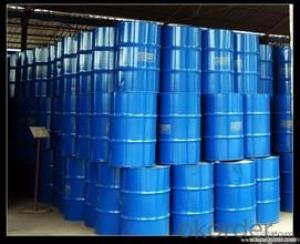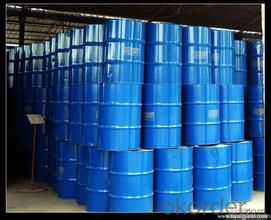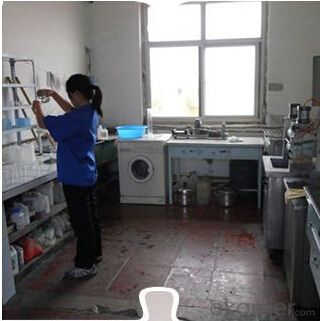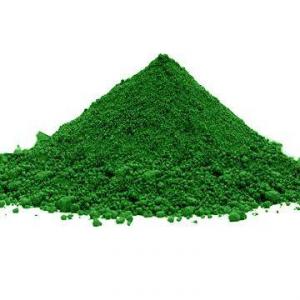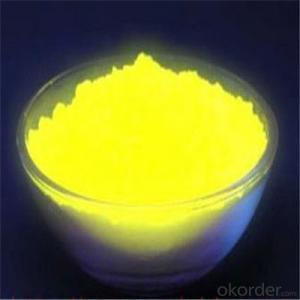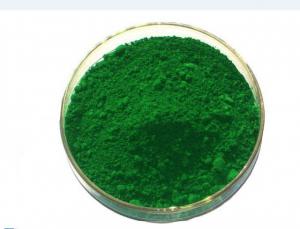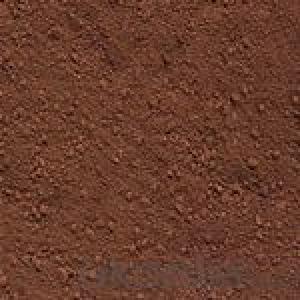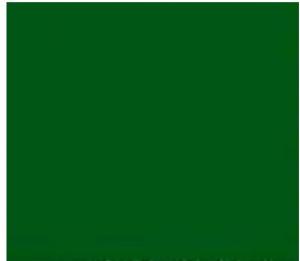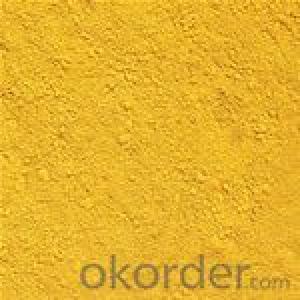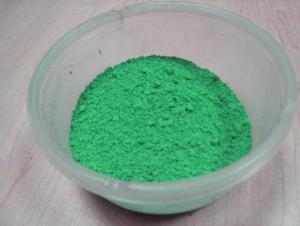Chemical silane siloxane durable water repellent for textile AB
- Loading Port:
- Shanghai
- Payment Terms:
- TT OR LC
- Min Order Qty:
- 1 bottle
- Supply Capability:
- 10000 bottle/month
OKorder Service Pledge
OKorder Financial Service
You Might Also Like
Quick Details
| Classification: | Chemical Auxiliary Agent | CAS No.: | N/A | Other Names: | Waterproofing agent |
| MF: | N/A | EINECS No.: | N/A | Purity: | 99% |
| Place of Origin: | Hebei China (Mainland) | Type: | Finishing auxiliary | Usage: | Textile Auxiliary Agents,Silane siloxane textile water repellent |
| Brand Name: | RUI XU | Model Number: | AB | Certificate:: | ISO9001:2000 |
| Environmental:: | no APEO, PFOA, PFOS | Toxicological:: | non-toxic | Hazards:: | harmless |
| Stability:: | high |
Packaging & Delivery
| Packaging Detail: | 25,125kg plastic drum 15-17tons/20GP' |
| Delivery Detail: | within 15 days after deposit |
Specifications
1. washable
2. soft handle, elastic resilience, smoothness and gas permeability
3. no APEO, PFOA, PFOS
Sample is available
silane siloxane water repellent for textile AB
1. Physicochemical properties:
Ingredients: organosilicon compound
Appearance: A:white emulsion B: semitransparency emulsion
Ion: anionic
PH: A:4-5 B:5-6
2. Application of scope:
Various fibres such as cotton, Polyester, dacron, nylon.
3. Advantages:
Excellent water repellent ability
soft handle, elastic resilience, smoothness and gas permeability
no APEO, PFOA, PFOS
washable
4. Application methods:
1. A:15 g/l , B:15g/L, drying by 180-190°C for 1 minute to cotton,polyester,dacron.
2. A:10 g/l , B:10g/L, drying by 170°C for 2 minutes
practical dosage depends on trials.
5. Limited guarantee:
As the application conditions and methods of this product in practice are not controllable, we will not give any form of guarantee about the applicatablity, and not afford any occasional or attached lose, the only guarantee we give is that the product we provide is meet the Huancheng available specification
- Q: Are carontenoids and anythocyanin accesory pigments.
- This Site Might Help You. RE: What are accessory pigments? Are carontenoids and anythocyanin accesory pigments.
- Q: What are MAC eyeshadow pigments? Are they just like regular eyeshadow.. are they used the same way? Has anyone tried them and liked them?
- NEVER TRIED THEM HEARD GOOD THANGS THO
- Q: Explain why plants need a variety of pigments to carry out photosynthesis?
- In photosynthesis plants make their which is a carbohydrate i.e. a compound of carbon, hydrogen and oxygen. That carbohydrate is glucose (C6H12O6). The chemical equation of photosynthesis is : 6CO2 + 12H2O = C6H12O6 + 6O2 + 6H2O Here water, carbon dioxide and light (light gives the energy to prform the reaction) helps to form chains of carbohydrate that further makes sucrose, a type of sugar, which can be utilized by plants as food.
- Q: What are iridescent magnetic effect pigments?
- Iridescent okorder /... (really long explanation)
- Q: i want to get mac melon pigment but i dont know what other eyeshadows to pair and blend it with. im looking for an everyday look. also what brushes to use with pigments?
- With the Melon pigment, I would recommend using warm, chocolate copper, bronze types of colors. It will provide a nice contrast to the melon while giving your eyes some added depth and definition. As far as brushes go, I like using the 252, large shader brush. This brush picks up pigment nicely and it has nice compressed/dense bristles so you can manipulate and lay the pigment down with greater ease. I like the #286 The dual fiber blending brush for pigments as well. It's made of natural fiber and synthetic fiber. This is a great brush because you really get 2 brushes in 1. With this 'blending' brush you can also use it for targeted color deposits and the synthetic fibers won't suck up what you just laid down and you will get a flawless, beautifully blended eyeshadow application.
- Q: What are the roles and type of plant pigments?
- Pigments are able to absorb specific wavelengths of light which power photosynthesis. Chlorophyll, which is green, absorbs all wavelengths except green. Each photon excites an electron in the light harvesting complexes of a photosystem in a chlorophyll molecule, eventually producing ATPs. Other pigments will be a different color and will be able to absorb other wavelengths, maximizing energy absorbency when the sun's rays change. Pigments are chemicals inside living things that absorb certain types of light. In plants, the pigment chlorophyll in leaves absorbs sunlight for photosynthesis to work, where the energy comes from. Chlorophyll absorbs all light except green, which is reflected. That's why most plants are green...
- Q: how exactly do pigments work? i know that they absorb every color except the one that we see, but what are the exact physics or whatever behind the selective absorption of the light?
- Photons are the packets of energy that light delivers. Different colors of light have different amounts of energy in each of the light's photons. So, green light's photons have different amounts of energy from red light's photons. Different materials absorb different amounts of energy via photons very selectively. It has to do with the energy states of the molecules, and the electrons that are in the outer shell.
- Q: light absorption, which pigments are involved?
- All photosynthetic organisms contain one or more organic pigments capable of absorbing visible radiation, which will initiate the photochemical reactions of photosynthesis. The three major classes of pigments found in plants and algae are the chlorophylls, the carotenoids and the phycobilins. Carotenoids and phycobilins are called accessory pigments since the quanta (packets of light) absorbed by these pigments can be transferred to chlorophyll. Chlorophylls chlorophyll a - present in all higher plants and algae chlorophyll b - present in all higher plants and green algae chlorophyll c - diatoms and brown algae chlorophyll d - red algae (chlorophyll a is present in all photosynthetic organisms that evolve O2.) Chlorophyll molecules contain a porphyrin 'head' and a phytol 'tail'. The polar (water-soluble) head is made up of a tetrapyrrole ring and a magnesium ion complexed with the nitrogen atoms of the ring. The phytol tail extends into the lipid layer of the thylakoid membrane. Carotenoids (carotenes and xanthophylls) Carotenes: -carotene - higher plants and most algae $-carotene - most plants some algae xanthophylls: luteol, fucoxanthol and violaxanthol Carotenoids contain a conjugated double bond system of the polyene type (C-C=C-C=C). Energy absorbed by carotenoids may be transferred to chlorophyll a for photosynthesis. Phycobilins (found mostly in red and blur-green algae): phycoerythrin phycocyanin allophycocyanin )
- Q: why do plants need more than one pigment for light absorption?
- Pigments are molecules with an array of covalent bonds capable of absorbing a photon of light that has only a certain wavelength. The absorbed wavelength is only a fraction of the continuous range of wavelengths reaching the reaction center of a chloroplast. Each pigment species absorbs a different portion of the spectrum. So most photosynthesis works in combinations of pigments to absorb a across the visible spectrum and somewhat beyond. Some pigments (accessory photosynthesis carotenoid pigments) absorb useful wavelengths to pass the energy to chlorophyll A while the Xanthophyll Cycle pigments absorb potentially harmful high energy wavelengths for dissipation. Accessory pigments provide a range of spectra collection that allowed plants to adapt successfully to environments of differing light conditions. Pigments provide coloration to signal flower or fruit maturity to pollination partners or seed dispersal partners. Anthocyanins and carotenoids perform these communication functions. Phytochrome is a pigment that absorbs one wavelength only to toggle to another shape capable of absorbing at a different wavelength. Algae and plants both use this system to inform them of the time of year so they can synchronize with the best season in their habitat for reproduction efforts to succeed. Plants use phytochrome to regulate the photoperiod of flowering or seed germination.
Send your message to us
Chemical silane siloxane durable water repellent for textile AB
- Loading Port:
- Shanghai
- Payment Terms:
- TT OR LC
- Min Order Qty:
- 1 bottle
- Supply Capability:
- 10000 bottle/month
OKorder Service Pledge
OKorder Financial Service
Similar products
Hot products
Hot Searches
Related keywords
